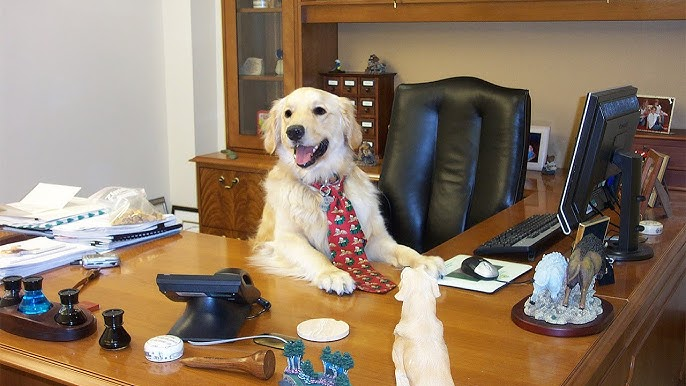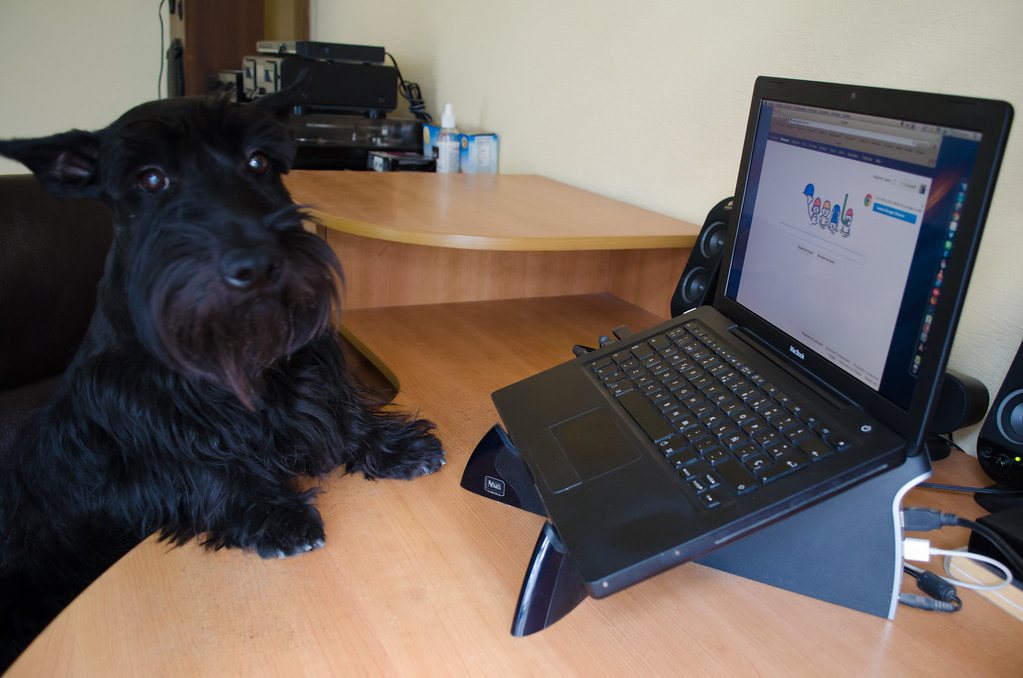1. Legal and Liability Issues

YouTube
In many workplaces, there are strict regulations and insurance policies that govern the presence of animals on the premises. Allowing dogs into the office could create potential legal complications, especially if an incident occurs—such as a dog biting an employee or causing damage to property. Workplace injury claims, particularly those related to pet behavior, can lead to costly lawsuits and affect the company’s reputation. Moreover, insurance companies may have policies that exclude coverage for injuries caused by animals. If an office dog causes damage to equipment or another employee’s personal property, the employer could find themselves financially responsible for repairs and legal fees.
2. Allergies and Health Concerns

Flickr
Pet allergies are a widespread issue, and not all employees are comfortable being around animals in the office. For those who suffer from pet allergies, even minor exposure to dog hair or dander can trigger a variety of symptoms, including sneezing, coughing, itchy eyes, and headaches. In some cases, allergies can escalate into more serious conditions like asthma attacks or respiratory issues, particularly in enclosed or air-conditioned office spaces. Moreover, for employees with weakened immune systems or asthma, the presence of a dog in the workplace can make the environment hazardous. It’s essential to consider all workers’ health before allowing pets in the office.
3. Hygiene and Cleanliness Issues

Flickr
Dogs, as lovable as they are, can be a major source of mess in the workplace. Whether it’s shedding fur, tracking dirt from outside, or having accidents indoors, pets can create additional cleaning challenges. Offices with carpeting, shared spaces, or limited cleaning staff are particularly vulnerable to the chaos that can come with allowing dogs into the workplace. Even if a dog is well-behaved, it still sheds hair, carries dirt, and might spread germs or bacteria throughout the office. Maintaining a clean and hygienic environment becomes more difficult when pets are involved, especially in areas like kitchens or common meeting rooms that are shared by all employees.
4. Not All Dogs Are Well-Behaved

Flickr
While some dogs are calm and well-trained, not all animals are suited for an office environment. Some dogs may have behavioral issues, such as excessive barking, anxiety, or aggression, that could make the work environment uncomfortable. Dogs can also become territorial, especially if there are other dogs in the office, leading to fights or tension between pets. Furthermore, certain dogs may not be accustomed to crowded, noisy environments like offices, which can cause them stress and anxiety. In these cases, they might react poorly, causing disruptions or even putting employees at risk. The challenge of managing dogs with behavioral problems can outweigh the benefits of having them in the office.
5. Potential for Accidents or Damage

Flickr
Even the most well-trained dogs can have accidents in an office environment, especially if they’re not used to being confined to a single area for extended periods. Dogs that are left alone or not attended to frequently may chew on office supplies, such as pens, cables, or furniture, which can lead to costly repairs or replacements. In some cases, dogs may also relieve themselves inside the office if they’re not given regular breaks outside. This can result in unpleasant odors and further cleaning challenges. Additionally, dogs might damage electronic equipment, such as keyboards or phones, creating even more headaches for office management.
6. Noise and Disruption in Open-Plan Offices

iStock
Open-plan offices, which are already prone to noise and distractions, can become even more chaotic with the addition of a dog. Barking, whining, or even the sound of a dog eating or moving around can make it difficult for employees to concentrate or hold conversations. For employees who need a quiet and focused environment to perform their tasks, the noise created by dogs can become an overwhelming and frustrating distraction. In meetings, the presence of a dog could further disrupt the flow of conversation or presentations. The increased noise levels can lower morale and contribute to a less productive work atmosphere.
7. Increased Stress and Anxiety

Flickr
While some people find comfort in having a dog nearby, others may find it stressful. The presence of a dog can induce anxiety for individuals who are afraid of animals or those who are uncomfortable being in close proximity to pets. Some employees may also feel stressed about the dog’s behavior or how it’s affecting their workday. In addition, dogs in the office can add to the pressure of managing schedules, as employees may have to take breaks for walks or bathroom time for their pets. For individuals who are not pet lovers, a dog in the office can create unnecessary tension and stress, which negatively affects work relationships and overall morale.
8. Health and Safety Concerns

iStock
Dogs in the office can also present potential health and safety risks, especially in environments where employees interact with clients or customers. Not all dogs are properly vaccinated, and some might carry diseases or parasites that could be transmitted to humans. Additionally, certain breeds of dogs may be more prone to aggression, which could result in bites or other injuries. While most dogs are friendly, there’s always a risk that an animal might react unpredictably, especially if it’s stressed, scared, or not socialized properly. Health and safety are paramount in any office environment, and allowing dogs could complicate liability concerns for employers and make the workplace riskier for employees.
9. Distractions and Decreased Productivity

iStock
Dogs, especially in a busy office, can be a constant source of distraction. Their barking, need for attention, or playful behavior can easily interrupt meetings and conversations. Workers may find themselves tempted to stop what they’re doing to pet the dog, take it for a walk, or simply engage with it in a playful way. This can severely hinder productivity, particularly in tasks that require deep concentration or focus. While some people find the presence of a dog comforting, others may find it an added stressor. In a work environment where time is valuable, distractions like these can quickly add up and affect overall efficiency.
10. Disruption of Office Dynamics

YouTube
Introducing dogs to the workplace can change the dynamics of a team. Some people may form close bonds with the office dog, while others may feel left out, uncomfortable, or even resentful of the pet’s presence. Employees with phobias of animals or those who simply don’t enjoy being around pets may feel alienated or stressed. These social divides can lead to tension, especially in collaborative environments. Additionally, office dogs can unintentionally favor certain individuals over others, leading to feelings of exclusion and animosity. When the office dynamics are disrupted, it can hinder teamwork and damage the overall office atmosphere, making it harder for employees to work together effectively.


